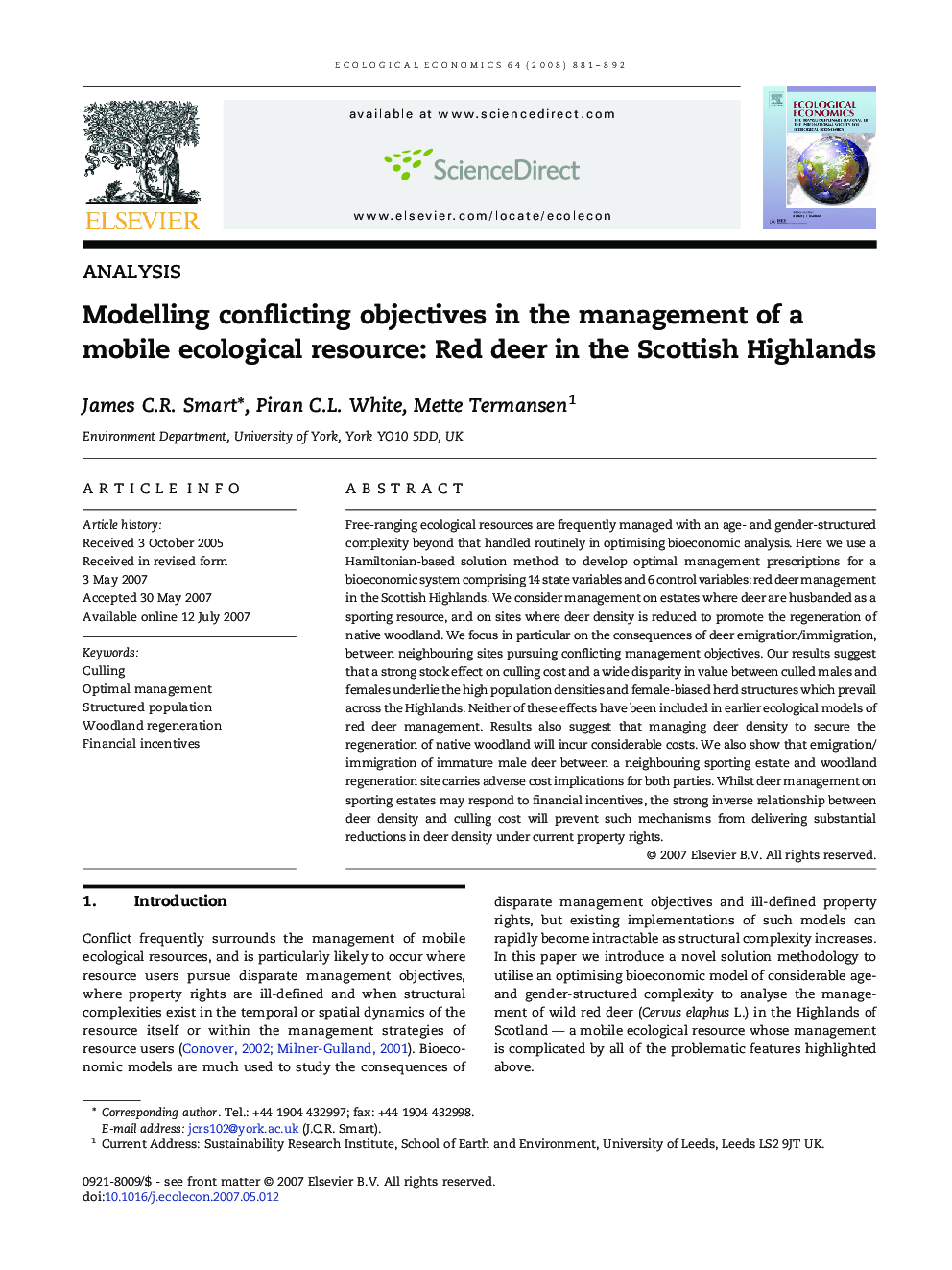| Article ID | Journal | Published Year | Pages | File Type |
|---|---|---|---|---|
| 5052023 | Ecological Economics | 2008 | 12 Pages |
Free-ranging ecological resources are frequently managed with an age- and gender-structured complexity beyond that handled routinely in optimising bioeconomic analysis. Here we use a Hamiltonian-based solution method to develop optimal management prescriptions for a bioeconomic system comprising 14 state variables and 6 control variables: red deer management in the Scottish Highlands. We consider management on estates where deer are husbanded as a sporting resource, and on sites where deer density is reduced to promote the regeneration of native woodland. We focus in particular on the consequences of deer emigration/immigration, between neighbouring sites pursuing conflicting management objectives. Our results suggest that a strong stock effect on culling cost and a wide disparity in value between culled males and females underlie the high population densities and female-biased herd structures which prevail across the Highlands. Neither of these effects have been included in earlier ecological models of red deer management. Results also suggest that managing deer density to secure the regeneration of native woodland will incur considerable costs. We also show that emigration/immigration of immature male deer between a neighbouring sporting estate and woodland regeneration site carries adverse cost implications for both parties. Whilst deer management on sporting estates may respond to financial incentives, the strong inverse relationship between deer density and culling cost will prevent such mechanisms from delivering substantial reductions in deer density under current property rights.
